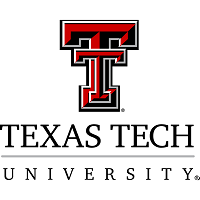Below is a summary of the abstract you submitted. Presenting author(s) is shown in bold.
If any changes need to be made, you can modify the abstract or change the authors.
You can also download a .docx version of this abstract.
If there are any problems, please email Dan at dar78@pitt.edu and he'll take care of them!
This abstract was last modified on March 31, 2025 at 10:50 a.m..

Starting in the fall of 2023, the phages ScarletRaider and FlyingTortilla were successfully isolated on Gordonia rubripertincta from soil samples collected in Lubbock, TX. The samples were processed using a triple plaque purification overlay technique . We then produced a high titer lysate and extracted the genomic DNA using a kit, which was sequenced by the Pittsburgh Bacteriophage Institute. Both the phage were found to belong to the DQ cluster, with ScarletRaider and FlyingTortilla determined to have a genome size of 92813 and 92983 base pairs, respectively. Additionally, ScarletRaider was measured to have a GC content of 60.4% with 127 genes and FlyingTortilla was measured to have a GC content of 60.3% with 125 genes with both being circularly permuted. Using DNA Master in conjunction with BLASTp, we determined the starts and stops of each ORF. Following this, we used the programs BLASTp, Phamerator, and HHpred to determine the most likely function of the ORFs, which were then uploaded to PECAAN for official documentation. The phage names were selected based on cultural elements from Texas Tech, with ScarletRaider being one of the mascots to be on the field at the beginning of home football games, and FlyingTortilla referencing a tradition to throw tortillas onto the field during kickoff. The primary motivation of this program is that with enough participation, the collective knowledge of bacteriophage, specifically infecting members of the bacterial family Actinobacteria in the case of SEA-PHAGES, can be advanced enough to create a proper base of information needed to reduce sparseness of current bacteriophage data
